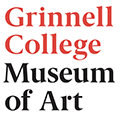-
Artworks

Christina Quarles
American, b. 1985
A Head of Ourselves (Lez We Get), 2019
Acrylic on canvas
62 x 50 in. (157.48 x 127 cm)
© Christina Quarles. Collection of the Green Family Art Foundation, courtesy of Adam Green Art Advisory
Christina Quarles speaks candidly about the effect upon her identity of being Queer and also being bi-racial, but being someone who “reads white.” For her, whiteness is not a neutral position as many people, subconsciously and/or overtly, conceive it. Rather, she experiences whiteness as a spectrum, one on which her place is constantly in flux depending on self-determination and external forces that she cannot control.
Her emphasis on contour lines is both ingrained (her intensive art education focused on line drawing from an early age) but also related to her sense of the extremities of the body — its limbs and its skin, literally its outer limits — being the place where our bodies meet the world. We present our faces to the world as representation of our identity, yet we ourselves cannot see our faces. In that sense our face/identity from moment to moment is denied us, when everyone around us is seeing its variations in real time. What we do see are other people as they respond to us, and our own extremities — skin, hands, feet — as we deploy them to navigate and negotiate our paths around, through, between, and among others.
1of 3


